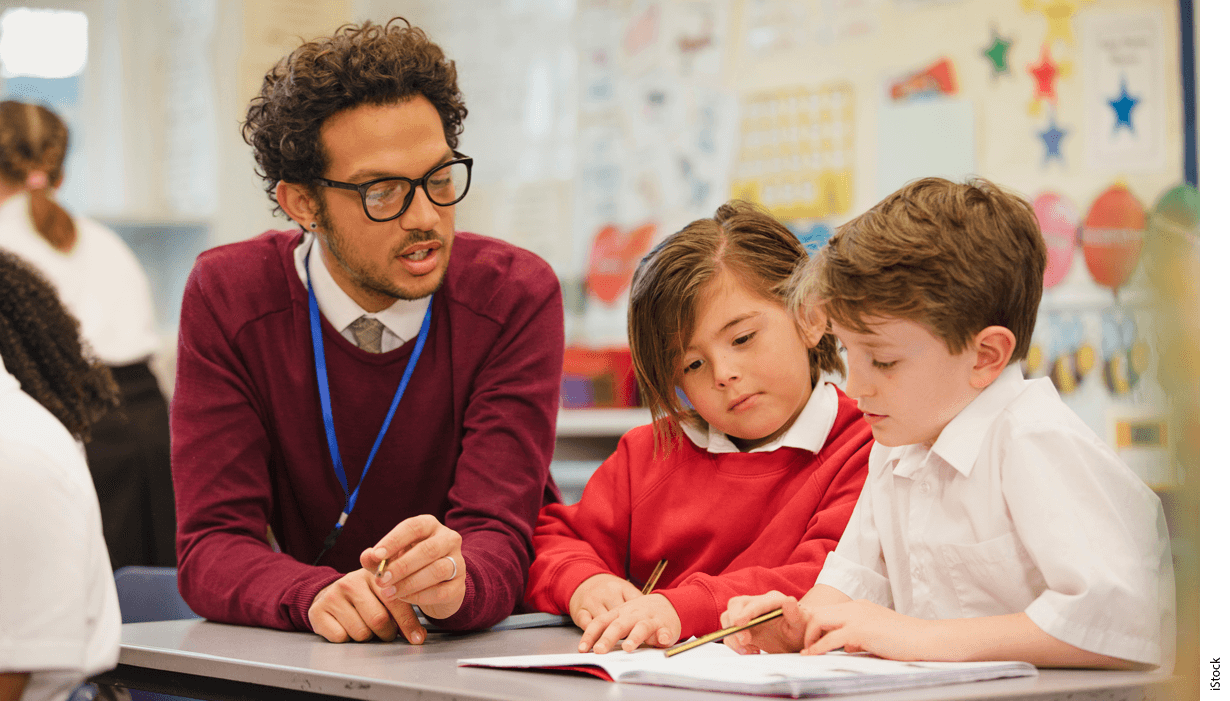
The federal funding to help schools cope with the Covid-19 pandemic is winding down—and as it does, the drumbeat for a fresh infusion of federal dollars is growing louder. But before more money is spent, it’s time to ask what we got out of the last $190 billion of federal dollars.
This money largely went directly to schools with few strings attached. They had the freedom to decide how best to deal with the pandemic learning problems. The needs were great. The closure of schools in March 2020 was a real blow to the Covid cohort of students.
The substantial duration of those closures and shaky restart of in-person school compounded the initial losses. My estimate of the average impact on all of the affected students is a 5 to 6 percent lowering of lifetime income. The loss is even larger for disadvantaged students.
The immediate discussions after the first closures centered on the need to make the schools better than they had previously been. Indeed, if the schools simply returned to their pre-pandemic levels of learning, the learning losses caused by the closures would be permanent, and students would later suffer when they entered the labor market. The only way to erase pandemic losses would be to increase the post-pandemic rate of learning.
But the latest data on performance from NWEA, a nationally recognized testing firm, indicate that the rate of learning during the 2023–24 school year was lower than rates before the pandemic. That indicates our schools have yet to get back to where they were before 2020, let alone get better.
And that matters. The odds of making up for prior learning losses once a student leaves the K–12 schools are slim. That means that the 19 million public school students and the 2 million private school students who were in school in March 2020 but have now left the K–12 schools will most likely suffer the consequences of that lost learning far into the future. The current school year will add another 5 million to this legion of pandemic-harmed students leaving school with learning deficits.
EdNext in your inbox
Sign up for the EdNext Weekly newsletter, and stay up to date with the Daily Digest, delivered straight to your inbox.
Two popular approaches to addressing pandemic learning problems have been widely relied upon: intensive tutoring and extended learning time, delivered through longer days or summer school. But for various reasons, including limited offerings, a shortage of providers, and nonmandatory programs, these efforts have not reached a majority of students. Existing evidence indicates that, as commonly applied, these measures fall short of reversing the learning losses and do nothing to make the schools better.
Surprisingly, there has been little sense of urgency in the face of those realities. Instead, greater attention has gone to trying to secure more federal funds. But there is another approach worth trying. Instead of outsourcing the learning problem to tutoring companies, as is commonly done, we should be looking at ways to mobilize the high-quality instructors we already have to teach more intensively.
How would this work? We could provide monetary incentives to our better teachers to take on more students. And we could change their jobs to make working conditions more attractive and to maximize their teaching talents. That might well mean sparing them ancillary duties like grading, monitoring students, serving on committees, and the like. We could simultaneously give our less able teachers fewer students, so that the effective quality of the current teacher force is raised to meet the learning challenges.
What prevents this? First and foremost, the teachers unions do not want to set a precedent by recognizing and rewarding the excellent teachers currently in the schools. Their immediate and reflexive response is usually this: “How would we know the good teachers?” That question is, of course, a red herring—the principals know, the teachers know, the parents know, and the students themselves know. Further, we have evaluation information in most instances to back up this general knowledge.
Another general refrain is that it is simply too hard to confront the existing political forces. But accepting that argument means resigning ourselves not just to seeing individual students fall short of their potential but also to having a less skilled workforce that will lower economic growth.
That’s why our focus should not be on squeezing out more federal funds first but rather on fashioning an effective way to rectify what is truly a national calamity.
Eric Hanushek is a senior fellow at the Hoover Institution of Stanford University and a prior member of the National Assessment Governing Board.
An earlier version of this post appeared in The Boston Globe.


